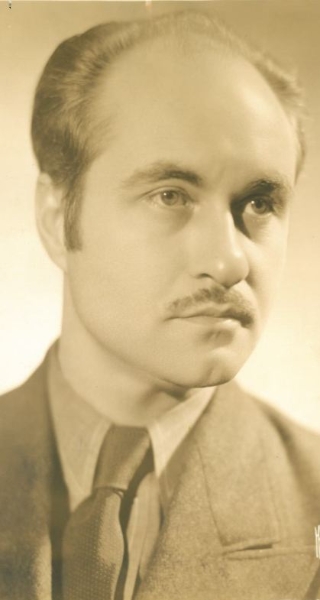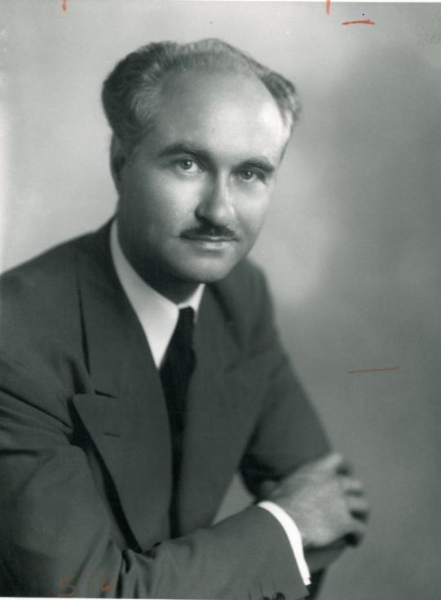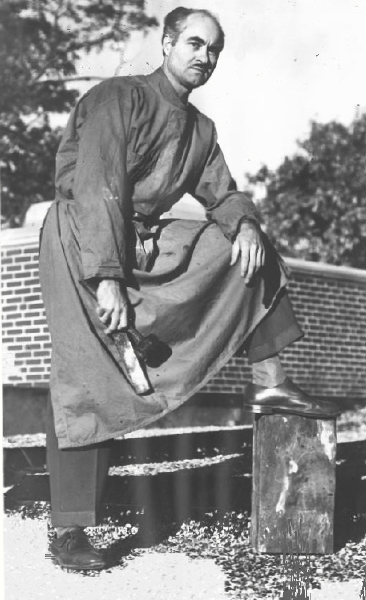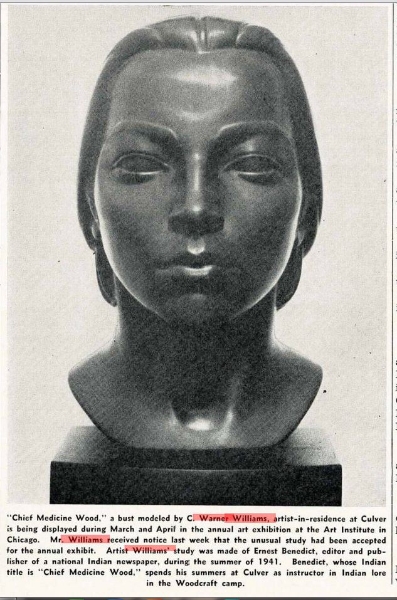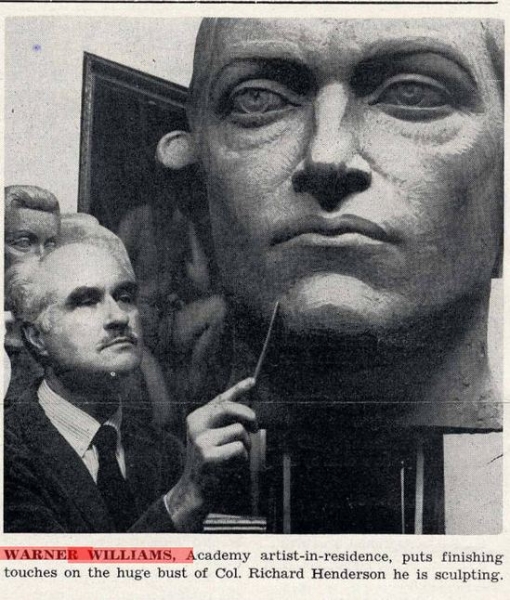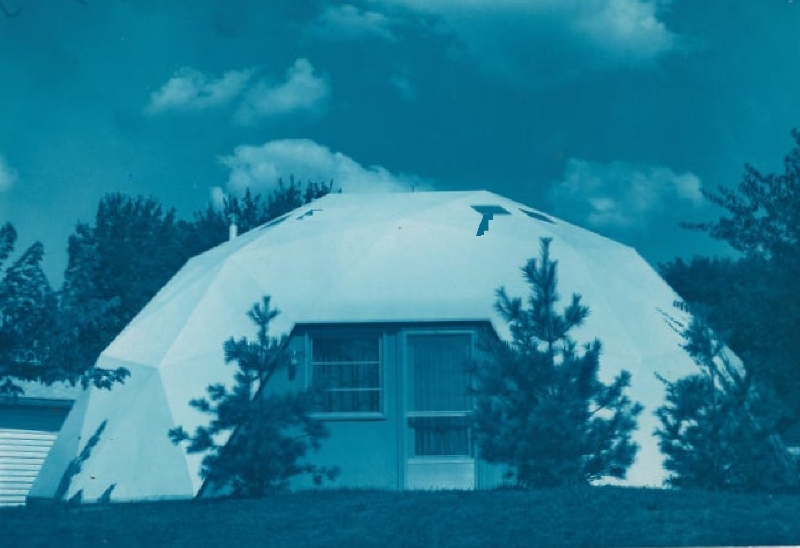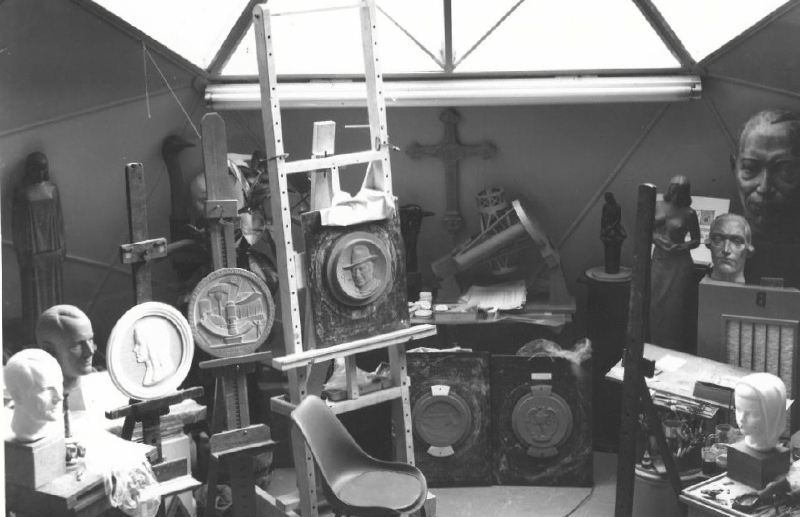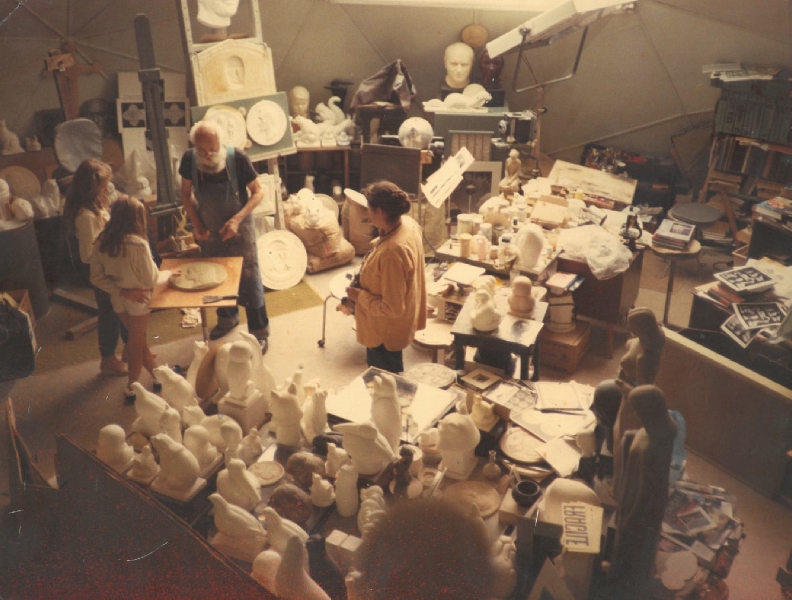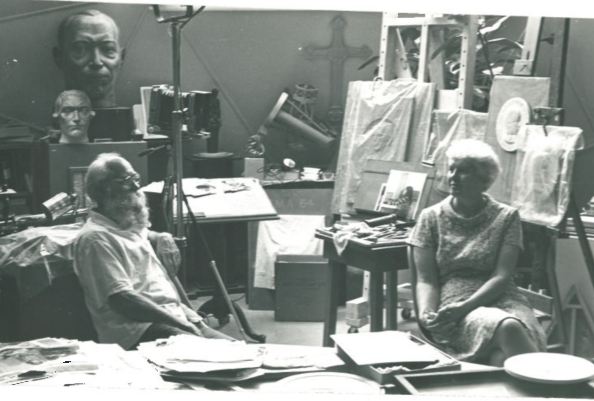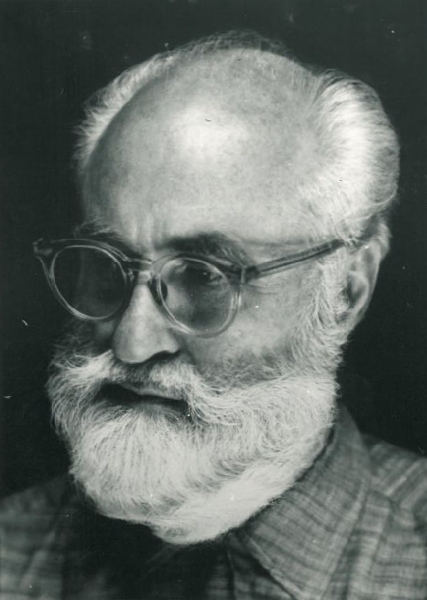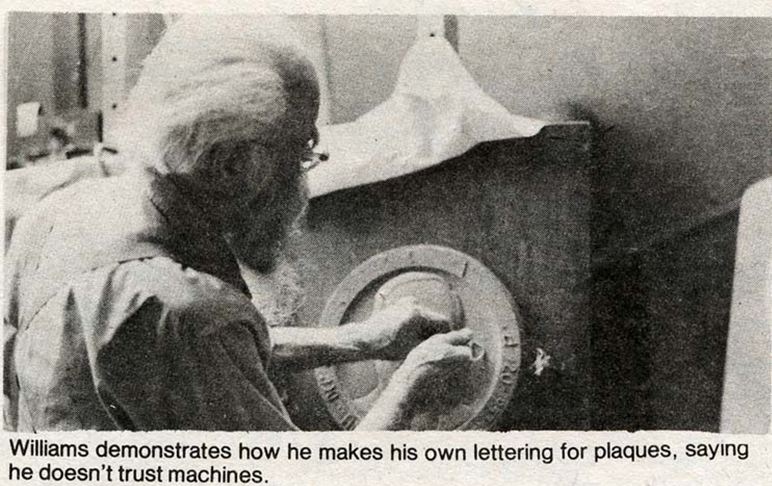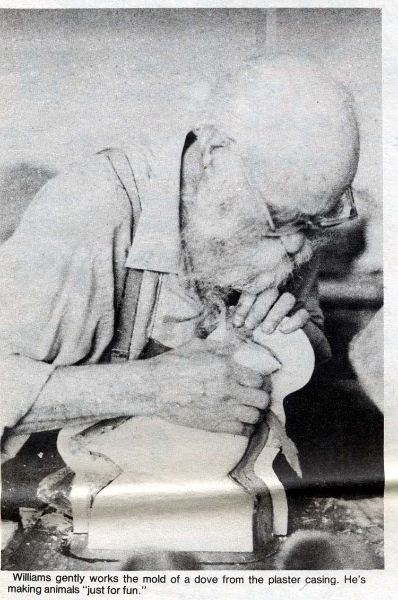Ask any long-time Culver citizen about Warner Williams, and you’ll probably hear a description of an eccentric man riding around town on his bicycle, his long beard flying behind him. Others may recall the geodesic dome he constructed in his back yard, out of from which he churned out countless plaster animal sculptures following his 1968 retirement from the Culver Military Academy. According to Williams’ son David, the dome was his habitat, from which he typically emerged only for meals. The dome still stands in town, as do his animal sculptures, bas-reliefs, and bronze medallions, which can be found in area homes, at the Culver Public Library, and throughout the Culver Academies campus. Despite the many accolades he received, Warner Williams is remembered as a quiet, humble person who worked long hours through the end of his life, chiefly because he enjoyed it. In a 1968 interview Williams said, “I’m not interested in production. I rarely reuse my work. Most of it is personal. I give a lot of things away.” In addition to creating personal and commissioned pieces, Williams also spent a great deal of time educating the public about the process of artistic creation. According to his son Earle, prior to coming to Culver, he spent years traveling throughout the Midwest giving lectures with his oldest son Carroll running the projector, he would select someone from the audience and create a model of them in 20 minutes, which he would later fine-tune in his studio.
Williams interests extended to astronomy, graphology, the study of handwriting, photography, love of nature and music besides his sculptures and art. Warner Williams believed that his work was more absolute than a question of the period of time it represented. His work ranged from children. to great men, to evolution. Williams once stated, “If the design is an interpretation of fundamental universal laws, it is timeless. It has perpetual value, timeless as the cosmos, even though it may have periodic characteristics.”
Williams’ family and friends describe him as a Renaissance man whose curiosity for the world and breadth of creative interests was seemingly endless. In addition to his prolific artistic career, Williams wrote hundreds of satirical limericks, played piano and accordion, analyzed people’s characters by their handwriting, and read constantly. He built telescopes, the dome, and a wide-format camera used to photograph his art. “If he couldn’t buy it, he’d built it,” said former Academy historian and Williams’ colleague Bob Hartman. He built several telescopes, one of which resided on the roof of the Music and Arts building at the Academy. “Every Saturday night when it was clear, cadets and families would come up and view planets and stars,” said Williams’ son David, noting that Scientific American Magazine featured Williams in a 1951 article about how to make your own telescope. One of his telescopes is still used at the observatory at the Woodcraft Camp. According to David, “[Warner] was an artist by trade but he was really a scientist.” He spent a great deal of time studying the natural world and his animal sculptures attest to that interest.
By all accounts, Warner Williams was a true eccentric. Locals typically recall his appearance first, describing him as a Gandalf-like figure. “He was this little gnome with a massive beard,” said his son David. “He was small of stature, but feisty, a rather ornery person,” said Anne Duff. Duff recalled how he once wrote to Life Magazine to complain that I and the F in the title were too close together. He later credited himself for the improved spacing. Many recall the metal WW that adorned the front of his car. His son Earle explained that Williams always pried the metal dealership symbols of his cars. “He despised advertising,” said Earle. “One time when I came home from college, I noticed all the soup cans had the labels taken off.” Earle’s mother, Jean, explained that Williams had removed the labels in a fit of anti-commercialism. Earle eventually inherited the WW plaque, which he adhered to his own car.
Both Williams’ sons noted that he was an inspiration for many cadets. “My father’s art studio was a safe haven with a lot of students at the Academy. Williams seemed to believe that everyone was an artist, if one could simply slow down, focus, and tap into an inner sense of seeing.” In 2012, the White-Devries Rowing Center was erected and adorned with two limestone eagle plaques. The architect was Williams former student John Chipman, who commissioned and paid for the plaques in Williams’ honor. They are based on the original bronze medallions Williams made for members of the crew team in 1968. Chipman, a 68’ graduate who owns his own architecture company, credits Warner Williams’ guidance for his success. Williams created a specialized architecture course for Chipman at the Academy. “He took me aside and said, ‘I really want to design this special curriculum for you.’ I ended up spending a lot of time in his studio working on my projects. He was a mentor to me,” said Chipman, recalling how Williams ordered him a subscription to Architecture Magazine, and counseled him on his college applications. “There [was] really no real recognition of Warner Williams and what he’s done for the Academy…He was a great man who’s under appreciated.”

